Best Voice Over Microphones
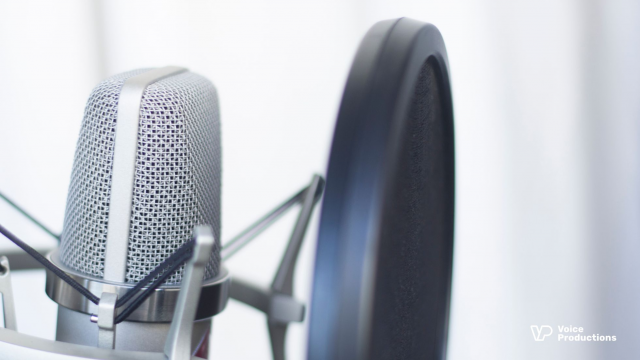
In this article, we will share a list of the best microphones for voice-overs according to our professional voice actors.
Voice-over microphones are the most important tool for professional voice actors. That's why we created this list with the best microphones for voice-overs according to our team of voice-actors.
None of these are better than the other, so we didn’t use a numbered list. The best voice acting microphones should have a combination of technical specifications, design features and performance characteristics to ensure optimal audio quality and versatility. We start with the list and then dive deeper into all the details.
Here’s our list of the best microphones for professional voice-overs:
-
Rode NT 2000
-
Neumann TLM 103
-
Neumann TLM 102
-
Sennheiser MKH 416
-
Neumann U87
-
Heli PR-40
-
AKG C214
-
Mojave MA-300
-
Rode NT 2
-
AKG C414
For optimal audio performance in voice recording, a professional grade voice acting microphone is essential for high-quality audio. While sound quality stands paramount in selecting a new microphone, what other considerations should one prioritize when investing in a microphone specifically for voice-over tasks?
General Insights: Choosing the right microphone for voice-over tasks requires understanding of microphone types and their directional characteristics.
-
Condenser Microphones: These are usually the go-to for studio-grade recordings due to their superior sound quality.
-
Dynamic Microphones: These are versatile, making them a good choice for extended voice-over sessions, especially in untreated studios, podcasting or outdoor settings.
Directional Characteristics:
-
Cardioid: These mics focus on capturing sound from one direction, making them a favorite for individual voice recordings.
-
Omnidirectional: These pick up sound from every angle, which might not be the first choice for solo voice-overs.
Remember, a higher price tag doesn’t always mean better quality. Research and reviews are key to find a microphone that suits your requirements and budget to record high-quality audio.
Here are the attributes a microphone for voice acting should have:
-
Type:
Large Diaphragm Condenser (LDC): These are the most popular for voice-over work due to their sensitivity, wide frequency response and ability to capture the nuances and subtleties of the human voice. A wide frequency response to capture the full range of the human voice, usually between 20Hz to 20kHz. A slight presence boost in the upper midrange helps in articulating speech.
-
Polar Pattern:
Cardioid: This is the most popular pattern for voice-over work. It picks up sound from the front and rejects sound from the back and sides, minimizing room noise and reflections.
-
Low Self-Noise:
Low self-noise ensures the microphone doesn’t introduce unwanted hiss or electronic noise, especially during quiet passages.
-
High Sensitivity:
Allows the microphone to pick up subtle nuances and dynamics in the voice.
-
High SPL Handling:
Ability to handle high sound pressure levels without distortion is crucial, especially if the voice-over involves shouting or louder passages.
-
Pop Filter:
A pop filter or windscreen is necessary to prevent plosive sounds (like ‘p’ and ‘b’) from causing distortion.
-
Shock Mount:
Helps isolate the microphone from physical vibrations, which can introduce unwanted noise.
-
Build Quality:
Robust and durable construction ensures longevity and consistent performance.
-
Connectivity:
XLR Connection: Preferred for professional setups as it’s balanced, which reduces the risk of interference and noise.1. Multitasking:
A voice-over microphone should also work well for singing or instrument recording.
-
Acoustic Treatment:
Not a feature of the microphone itself, but a well treated recording space is crucial. So the voice is captured clearly without reflections or room noise.
-
Price and Value:
There are many high-end microphones out there, but the best for voice-over should offer great value for money, quality vs price.
-
Brand:
Established brands offer good customer support, warranty and have a track record of producing good products.
-
Reviews and Testimonials:
User reviews, professional recommendations and testimonials can give you an idea of the microphone’s real-world performance.
The best microphone for voice-overs should have technical excellence, durability and value. It should capture the voice authentically, clearly and without coloration so the voice-over sounds professional and engaging.
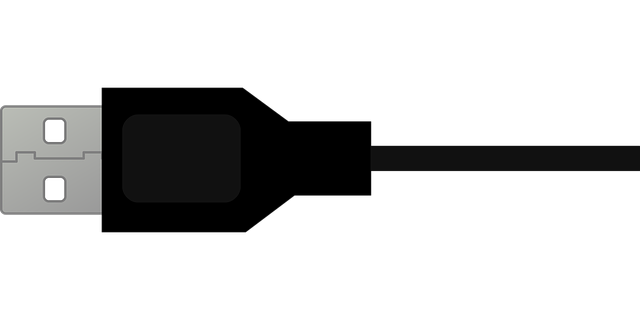
Why we don't use USB-mics for professional recordings
Using a USB mic for professional (voice) recordings is often discouraged for several reasons:
-
Audio Quality: USB microphones have built-in analog-to-digital converters, which might not be of the highest quality. XLR microphones can be paired with high-end external audio interfaces that offer better conversion and preamplification.
-
Latency Issues: A USB microphone can introduce latency, which is the delay between the sound being produced and when it’s heard or recorded. This can be problematic during real-time monitoring or when recording multiple tracks.
-
Limited Upgrade Path: With USB microphones, the preamp and converter is built into the microphone itself. So if you want to upgrade any part of your signal chain, you’d have to replace the entire microphone. With an XLR setup, you can upgrade individual components like the microphone, preamp or audio interface separately.
-
Durability and Longevity: Professional XLR microphones are built to last and can withstand the rigors of studio life. USB microphones being more consumer oriented might not have the same build quality or longevity.
-
Multitasking: XLR microphones can be used with various equipment from audio interfaces to mixers to portable recorders. A USB microphone is limited to devices with USB ports and compatible drivers/software.
-
Power Limitations: USB microphones draw power from the USB port, which can limit the microphone’s capabilities. XLR microphones can use external power sources like phantom power from an audio interface and can have more advanced microphone designs and features.
-
Multi-Mic Setups: Setting up multiple USB microphones on a single computer can be challenging due to driver conflicts and bandwidth limitations. With XLR microphones and an audio interface recording multiple microphones simultaneously is more straightforward.
-
Sound Coloration: Some USB microphones can apply digital processing or compression to the signal which can alter the natural sound. Professionals prefer a clean, uncolored signal that they can process as needed during post-production.
That being said, technology is always advancing and there are some high quality USB microphones out there that can produce good sound quality and great results for certain applications. But for professional studio recordings where quality and flexibility is key, XLR microphones with a dedicated audio interface are the preferred choice for voice over microphones.
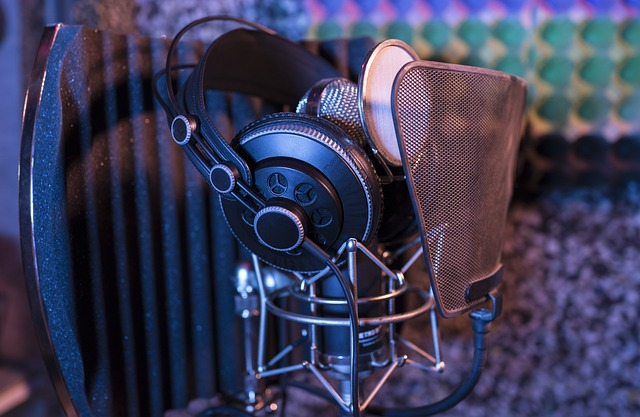
Condenser Microphones
Condenser microphones utilize a capacitor to transform acoustic waves into electrical signals. They comprise a diaphragm adjacent to a backplate, forming this capacitor. When sound strikes the diaphragm, it vibrates, altering the capacitor's distance and generating an electrical signal. These mics require an external power source, either from a battery or phantom power. Renowned for their sensitivity and broad frequency capture, they produce a clear, natural sound, making them studio favorites to record voice overs.
Condenser mics are sensitive recording instruments that utilize a responsive diaphragm to capture sound. Recognized as the most versatile studio microphones, they're suitable for recording sounds from virtually any instrument. Their heightened sensitivity compared to dynamic microphones makes them ideal for vocals and acoustic instruments. However, their delicate nature requires careful handling. Typically, they are suspended in the air using a shock mount with elastic bands to prevent vibrations.
There are two primary types of condenser microphones: large-diaphragm and small-diaphragm condenser mic. Large-diaphragm mics excel in capturing deeper, bass-rich sounds, making them perfect for vocals and voice actors. In contrast, small-diaphragm mics are adept at detecting high-frequency sounds, making them suitable for instruments like acoustic guitars or for capturing the shimmer of cymbals as drum overheads.
Now let's dive into the details of the mics in our list of professional microphones for voice overs
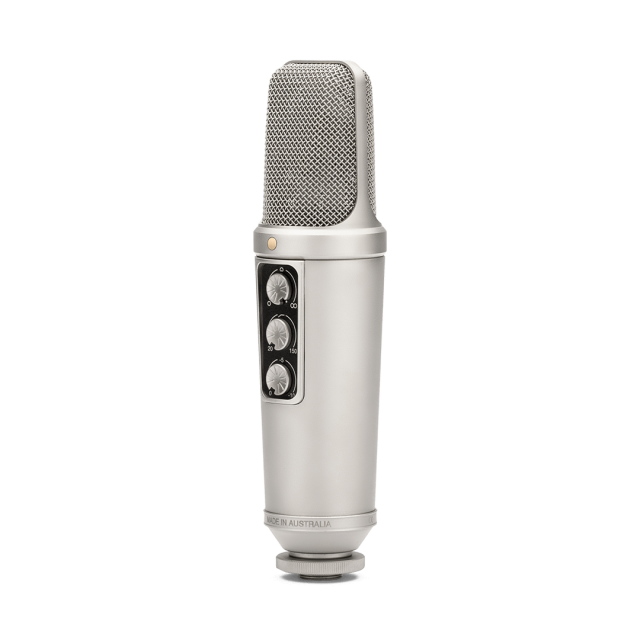
Rode NT2000
The Rode NT2000 is a highly versatile large-diaphragm condenser microphone crafted to serve as an indispensable tool in the studio. It's designed with a unique ability to seamlessly transition between different polar patterns, from omnidirectional to cardioid to figure-8. This adaptability, combined with its variable pad and high-pass filter, empowers users to have complete control over the microphone's sound, making it suitable for a diverse range of recording scenarios.
Key Features:
-
Continuously variable polar pattern control that can shift from omnidirectional to cardioid to figure-8.
-
Continuously variable pad ranging from 0 to -10dB.
-
Continuously variable high-pass filter, adjustable from 20Hz to 150Hz.
-
Audiophile-quality surface-mount electronics.
-
Gold-sputtered dual 1-inch capsule.
Technical Aspects:
-
Exceptionally low self-noise, registering at only 7dBA.
-
Capable of handling a maximum SPL of 147dB, which can extend up to 157dB when the pad is fully engaged.
Designed to deliver outstanding results across various sound sources. The Rode NT2000 stands out as a microphone that offers both flexibility and top-tier performance, ensuring that users can capture audio with precision and clarity regardless of the recording environment or source.
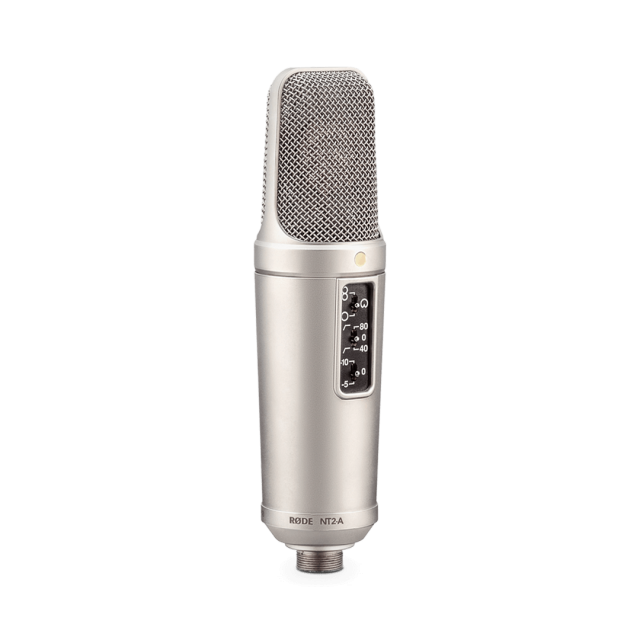
The Rode NT2-A stands as a highly adaptable large-diaphragm studio condenser microphone, meticulously crafted to deliver both impeccable audio quality and versatility. It's designed to evoke the smooth and rich character of iconic microphones from the 1950s and 1960s, ensuring a timeless sound quality that's suitable for various studio applications.
Key Features:
-
Multi-pattern large-diaphragm condenser microphone.
-
Three-position pad options: 0dB, -5dB, and -10dB.
-
High-pass filter with three settings: flat, 40Hz, and 80Hz.
-
Polar pattern control offering cardioid, omnidirectional, and figure-8 settings.
-
Dual 1-inch gold-sputtered cardioid condenser capsule.
-
Internal shock mounting to reduce handling noise.
-
Evokes the character of legendary microphones from the '50s and '60s.
Technical Aspects:
-
Designed to offer ultra-low self-noise, ensuring quiet operation.
-
Provides a comprehensive frequency response, capturing the full spectrum of sound.
-
The gold-sputtered cardioid condenser capsule ensures durability and consistent performance.
The Rode NT2-A is a testament to Rode's commitment to quality and innovation, offering a microphone that can seamlessly adapt to various studio scenarios while ensuring a sound that's both classic and contemporary.
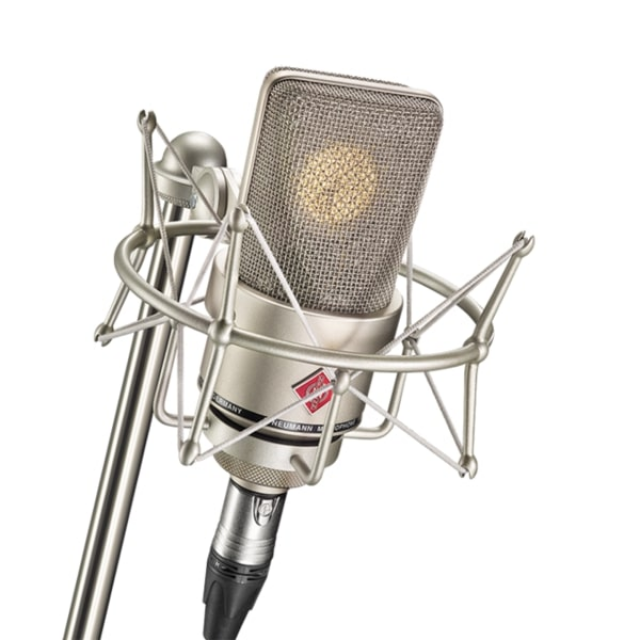
Neumann TLM 103
Introduced in 1997 as an affordable counterpart to the iconic U 87, the Neumann TLM 103 has established itself as a modern classic. It's characterized by its distinct Neumann look, thanks to its classic tapered headgrille design. The TLM 103 is a cardioid microphone with a large diaphragm condenser capsule, inspired by the legendary Neumann U 87's K67/87 capsule. It offers a slightly modern voicing with a pronounced presence boost for frequencies above 5 kHz, making it ideal for vocals and solo instruments. The microphone also boasts the renowned Neumann midrange, coupled with a deep yet controlled low end, making it perfect for resonant voices and robust bass instruments.
Key Features:
-
Large diaphragm capsule influenced by the classic U 87 microphone.
-
Enhanced sound presence.
-
Cardioid polar pattern.
-
Transformerless circuitry, ensuring high SPL handling.
-
Exceptionally low self-noise, registering at only 7 dB-A.
Technical Aspects:
-
The TLM 103 sets a benchmark in technical performance with its incredibly low self-noise of 7 dB-A, ranking it among the quietest microphones available.
-
It boasts a high sensitivity of 23 mV/Pa, ensuring ultra-low noise even when paired with budget preamps, audio interfaces, or vintage tube equipment.
-
Capable of handling significant sound pressure levels up to 138 dB without requiring preattenuation.
-
Its dynamic range spans 131 dB, making it versatile for capturing everything from soft whispers to powerful bass drums without introducing noise or distortion.
-
As part of Neumann's TLM series, the TLM 103 employs a transformerless output stage, minimizing transmission losses and delivering a genuine, uncolored sound.
The Neumann TLM 103 is not only suitable for project studios and broadcasting but has also been embraced by renowned studios for various applications, from vocals to classical instrument spot miking.
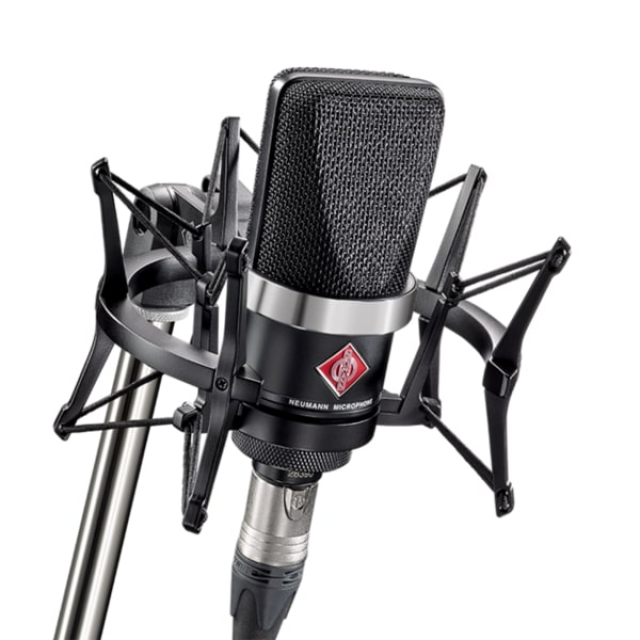
Neumann TLM 102
The Neumann TLM 102 is an entry-level large diaphragm condenser mic that embodies the esteemed Neumann sound. Crafted with meticulous attention to detail in Germany, this microphone, while being more compact and affordable than some of Neumann's premium offerings, does not compromise on sound quality. It boasts a sleek design, highlighted by a gleaming chrome ring, a classic tapered headgrille, and the iconic Neumann diamond emblem.
Key Features:
-
Genuine Neumann large diaphragm capsule in a compact design.
-
Uniform cardioid pickup pattern.
-
Transformerless circuitry, ensuring high sound pressure level handling without distortion.
-
Exceptionally low self-noise.
-
Gentle treble boost for silky high frequencies.
-
Integrated pop screen to reduce plosives.
Technical Aspects:
-
Newly developed large diaphragm condenser capsule that delivers a clear, focused sound with excellent definition.
-
Linear response across the midrange, capturing the true character of voices and instruments.
-
Slight frequency lift around 10 kHz for enhanced highs.
-
Controlled proximity effect, enriching the lower frequencies.
-
Self-noise of only 12 dB-A, ensuring quiet operation.
-
Capable of handling sound pressure levels up to 144 dB without distortion.
-
Dynamic range of 132 dB and a consistent cardioid pickup pattern.
-
Transformerless output stage, offering powerful bass and a direct sound without transmission losses.
The Neumann TLM 102 is designed to be versatile, making it an ideal choice for both home and project studios. Whether recording vocals, guitars, drums, or brass instruments, the TLM 102 delivers a true and uncolored sound, establishing itself as a reliable workhorse for any compact studio setup.
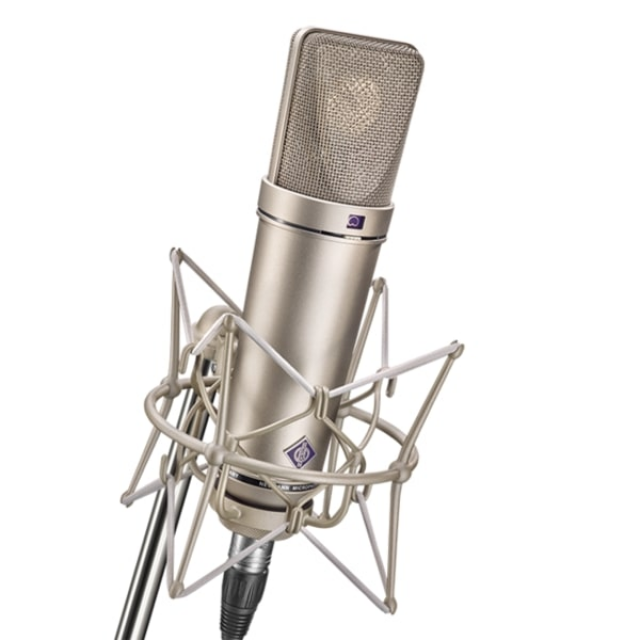
Neumann U 87 Ai
The Neumann U 87 Ai, introduced in 1967, stands as an iconic legend in the world of microphones. For over 50 years, it has been instrumental in shaping the sound of countless hit records. Its distinct tapered body and headgrille design have become emblematic of what a studio microphone represents. While its on-axis frequency response is notably flat, the U 87 Ai exudes a unique charisma, making it both versatile and instantly recognizable. Its sound quality, combined with its unique midrange presence, has made it a favorite among singers, engineers, and professionals in various audio applications.
Key Features:
-
Renowned as the world’s most famous studio microphone.
-
Instantly recognizable classic sound that's also versatile.
-
Offers a balanced frequency response.
-
Provides three polar patterns: omni, cardioid, and figure-8.
-
Equipped with a switchable low cut and pad.
-
Exceptionally low self-noise.
Technical Aspects:
-
Employs the same dual diaphragm condenser capsule design as its legendary predecessor, the U 67 from the early 1960s.
-
The head amplifier is rooted in the design principles of its tube-driven predecessor but utilizes a unique FET circuit with a minimal signal path.
-
Features a transformer-balanced output, ensuring maximum signal integrity and high common mode rejection.
-
Delivers unmatched clarity, making it the prime choice for vocals, speech applications, and a variety of instruments, from acoustic guitar to drums overheads.
-
Due to its robust bass response and midrange detail, it's frequently chosen for bass and guitar cabinets, classical recordings, and piano across various genres.
The Neumann U 87 Ai continues to be a staple in professional recording studios, celebrated for its unparalleled sound quality and versatility.
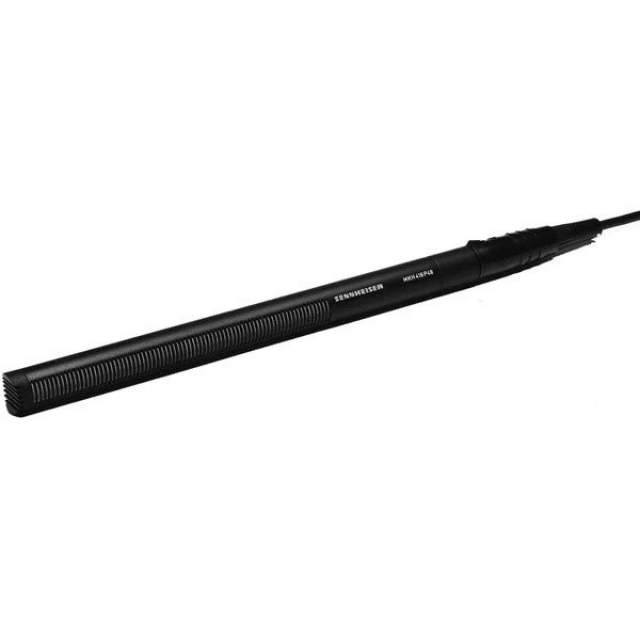
Sennheiser MKH 416 P48U3
The Sennheiser MKH 416 is a short shotgun interference tube microphone, designed primarily for film, radio, and television. It's especially adept for outside broadcast applications. The microphone boasts excellent directivity, a compact design, high consonant articulation, and superior feedback rejection, making it a versatile choice for various media applications and voice acting.
Key Features:
-
Increased Directivity: Enhanced by the interference tube principle.
-
Low Self-Noise: Offers very low inherent self-noise.
-
High Sensitivity: Ensures clear audio capture.
-
Transformerless Output: Provides a fully floating balanced output.
-
Rugged Design: Suitable for adverse climatic conditions with a matt black all-metal body.
-
Compact Design: Ideal for on-the-go and outdoor applications.
Technical Aspects:
-
Directionality: Offers excellent directivity due to its interference tube design.
-
Feedback Rejection: High feedback suppression ensures clear audio without disturbances.
-
Body: Features a matt black all-metal body for durability.
-
Accessories Included: Comes with an MZW 415 windshield and an MZQ 100 microphone clamp.
The Sennheiser MKH 416 P48U3 stands out as a reliable and high-quality microphone, suitable for professionals in the fields of film, radio, and television, particularly for outdoor broadcasts.
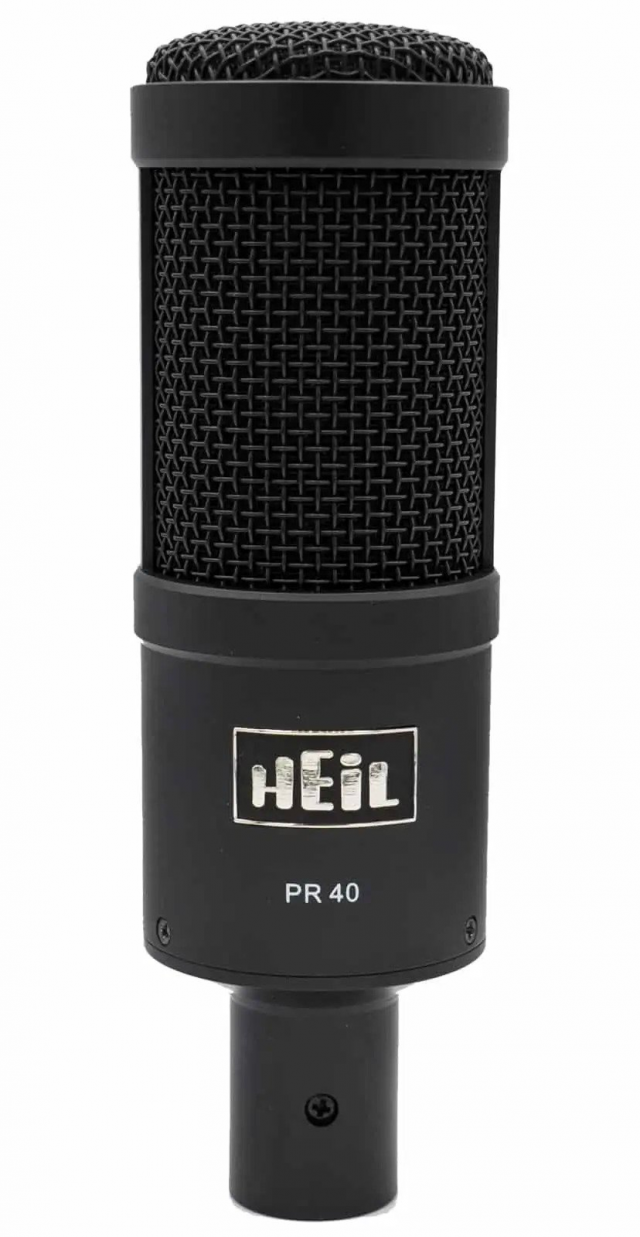
Heil PR-40
The Heil PR 40 is a dynamic microphone renowned for its versatility across podcasting, broadcasting, studio recording, and live sound applications. It a dynamic mic that's celebrated for delivering studio-quality sound with ease across diverse voices, instruments, and styles. The microphone's wide frequency response ensures a warm, articulate sound output in various scenarios.
Key Features:
-
Versatile Application: Ideal for podcasting, broadcasting, studio recording, and live sound.
-
Instrument Capture: Excels in recording powerful instruments with significant low end and high SPL, including bass and guitar cabinets, kick drums, and floor toms.
-
Podcast-Friendly: Delivers superior studio-quality sound without the need for external pre-amps or the complexities of condenser microphones.
-
Noise Rejection: Features excellent rear noise rejection, making it suitable for home recordings and spaces without sound isolation.
-
Broadcast Quality: Chosen by satellite radio stations, sports announcers, and broadcast professionals for its traditional broadcast sound without additional signal processing.
-
Accessories: Comes with a padded zipper carrying case and mic clip.
Technical Aspects:
-
Output Connection: 3 pin XLR
-
Element Type: Dynamic
-
Frequency Response: 28 Hz – 18 kHz
-
Polar Pattern: Cardioid
-
Rear Rejection: -40 dB at 180 degrees off-axis
-
Impedance: 600 ohms balanced
-
Output Level: -53.9 dB at 1 kHz
-
Weight: 13.5 oz
-
Max SPL: 148 dB
The Heil PR 40 stands out as a reliable microphone choice for professionals and enthusiasts alike, ensuring consistent sound quality across a wide range of applications.
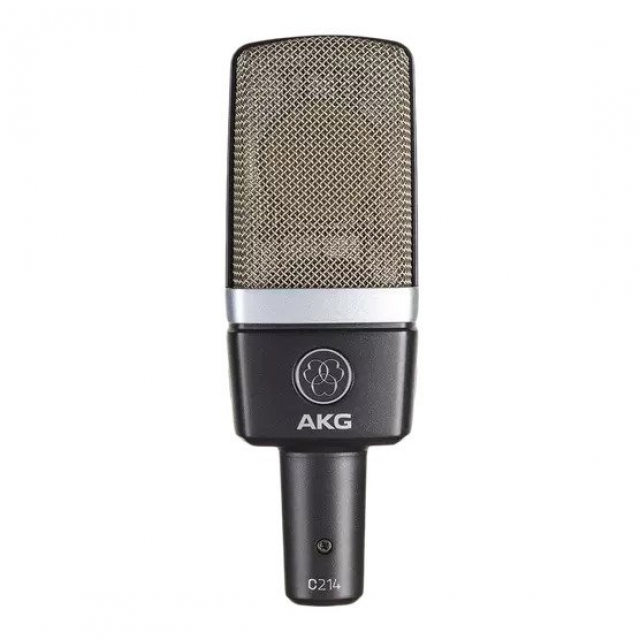
AKG C214
The AKG C214 is designed as a cost-effective alternative to the high-end C414 family. It uses the same 1-inch dual-capsule as the legendary C414 but in a cardioid-only design. The microphone offers a performance close to the renowned C414 B-XLS and is capable of delivering a dynamic range of up to 143 dB, capturing every nuance of voice or instrument. It's suitable for a wide range of applications, from studio recording to stage miking.
Key Features:
-
AKG’s legendary 1” edge-terminated large diaphragm
-
Incredible 143dB dynamic range (up to 156 dB SPL)
-
20 dB attenuation pad and low cut switch
-
Integrated capsule suspension reduces mechanical noise
-
All-metal die-cast body with a shock- and scratch-resistant finish
-
Double mesh grill ensures high RF immunity without affecting acoustics
-
Comes with a spider-type shock mount, windscreen, and metal carrying case
Technical Aspects:
-
Capsule: One Inch Large Diaphragm Condenser
-
Sensitivity: 20 mV/Pa (-34 dBV)
-
Frequency Range: 20 to 20,000 Hz
-
Equivalent Noise Level: 13 dB-A (IEC 60268-4)
-
Polar Pattern: Cardioid
-
Max. SPL: 136 / 156 dB SPL (0 / 20 dB Pad)
-
Dynamic Range: 123 / 143 dB-A (0 / 20 dB Pad)
-
Low Cut Filter: 160 Hz, 6 dB/Octave, switchable
-
Attenuation Pad: 20 dB, switchable
-
Phantom Power: 12 to 52 V (IEC 61938)
-
Dimensions: 160 x 55 mm
-
Net Weight: 280 g
-
Standard Accessories: H85 Shock Mount, W214 Windscreen, Metal Carrying Case
The AKG C214 stands out as a versatile microphone choice for professionals, ensuring consistent sound quality across a wide range of applications.
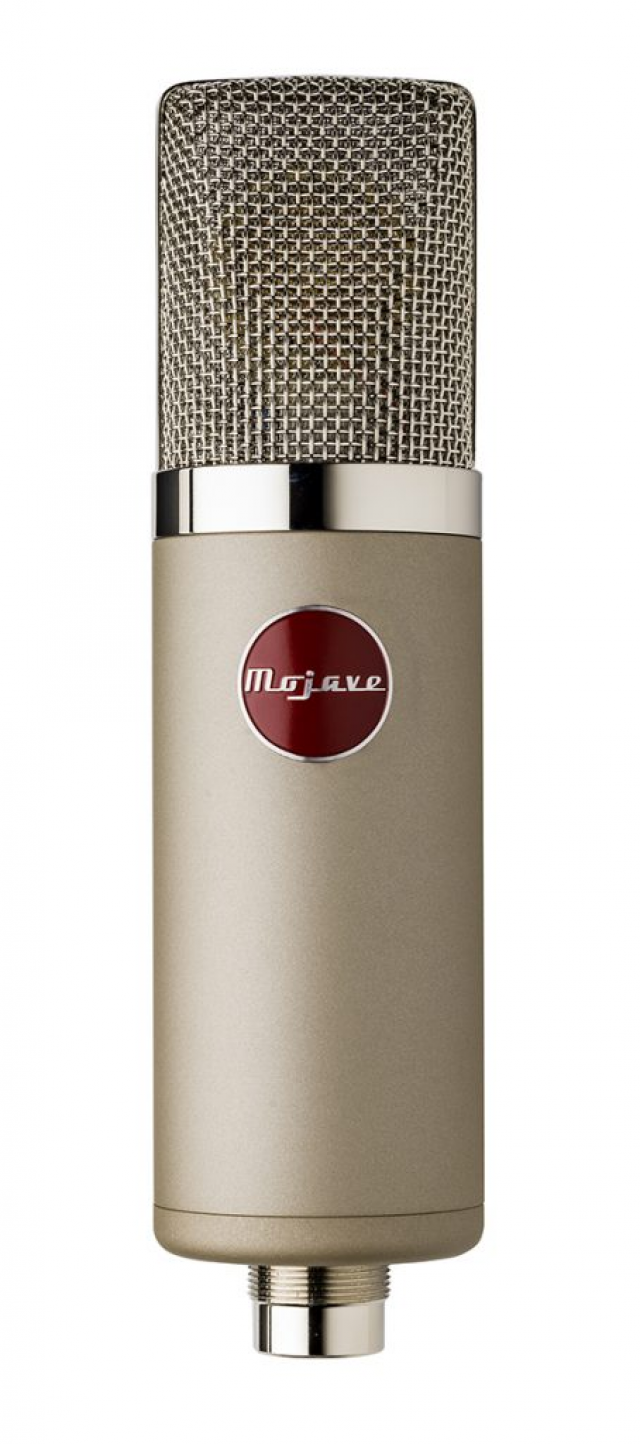
Mojave Audio MA-300
The Mojave Audio MA-300SN is a multi-pattern large diaphragm, vacuum tube condenser microphone. Evolving from the MA-200 designed by David Royer, the MA-300SN offers warm, full-bodied reproductions of vocals and instruments, eliminating the shrillness and high-frequency distortion artifacts often associated with modern condenser microphones. The microphone incorporates hand-selected, dual-diaphragm 3-micron capsules, high-quality Jensen audio transformers, and military-grade JAN 5840 vacuum tubes, delivering a performance reminiscent of classic condenser microphones.
Key Features:
-
Remotely controlled, continuously variable polar pattern selector
-
Switchable 15dB pad
-
Switchable Bass Roll-off
-
Hand-selected 3-micron double diaphragm capsule
-
Jensen audio transformer
-
Military grade JAN 5840 vacuum tube
-
Internal switchable power supply voltage
-
Ultra clean signal path
Technical Aspects:
-
Transducer Type: Externally polarized, pressure gradient capacitor - double diaphragm
-
Diaphragm: 1-inch diameter, gold sputtered
-
Diaphragm Thickness: 3-microns
-
Polar Response: Continuously variable from omnidirectional to figure-eight
-
Frequency Response: 20 Hz to 20 KHZ, +/-3 dB at "flat" setting of bass cut switch
-
Sensitivity: -37dB re 1V/pa
-
Maximum SPL: 120 dB with pad off, 135 dB with pad on
-
Distortion: < 1% @ 117 dB SPL, < 3% @ 125 dB SPL with pad off; < 1% @ 132 dB SPL, < 3% @ 140 dB SPL with pad on
-
Self Noise: 14db nominal, not to exceed 16db (A Weighted)
-
Pad: 15 dB
-
Bass Cut: 6 dB per octave below 100 hertz
-
Dimensions: Microphone: 7 5/8" X 2", 1 lb; Carrying case with accessories: 13 lbs
The Mojave Audio MA-300 is a versatile microphone choice for professionals, ensuring consistent sound quality across various applications.
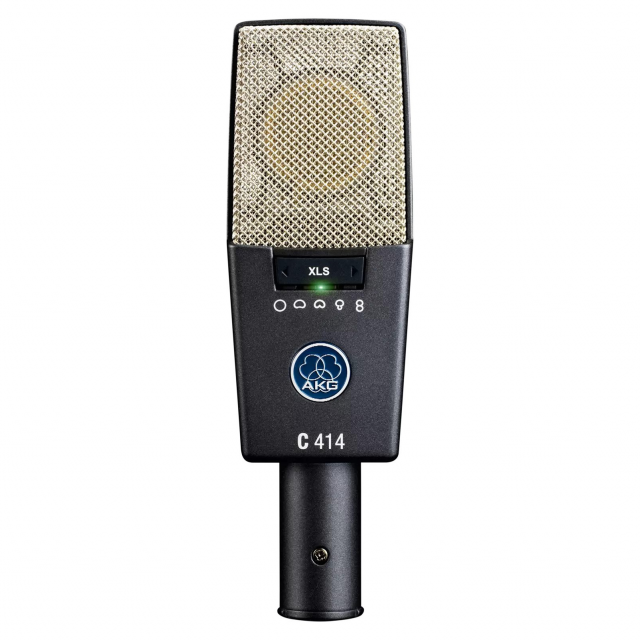
AKG C414 XLS
The AKG C414 XLS is a multipattern condenser microphone that has been a legend since 1971. It offers a choice of nine polar patterns, ensuring the perfect sonic capture for every application. The microphone also features a peak hold LED that displays even the shortest overload peaks. For live sound applications and permanent installations, all controls can be easily disabled for hassle-free use. The C414 XLS maintains the sonic character of the legendary C414 B-ULS, which has been the most popular AKG C414 version since its inception in 1971. Designed for the highest linearity and neutral sound, it has remained a versatile large-diaphragm microphone for decades.
Key Features:
-
Engineered for highest linearity and neutral sound.
-
Nine selectable polar patterns for versatile recording.
-
Three attenuation levels (-6,-12,-18dB) suitable for close-up recording or high-output sources up to 158dB SPL.
-
Peak hold LED for displaying overload peaks.
-
Controls can be disabled for live sound applications and permanent installations.
Technical Aspects:
-
Polar Patterns: Cardioid, Figure of eight, Hypercardioid, Omnidirectional, and Wide Cardioid.
-
Audio frequency bandwidth: 20 - 20000 Hz.
-
Equivalent noise level: 6 dB-A.
-
Sensitivity: 23 mV/Pa.
-
Signal to Noise: 88 dB-A.
-
Preattenuation Pad: -6; -12; -18 dB.
-
Bass cut filter: 160; 80; 40 Hz.
-
Electrical impedance: 200 Ohms.
-
Recommended load impedance: 2200 Ohms.
-
Dimensions: Length: 38 mm, Width: 50 mm, Height: 160 mm.
-
Net Weight: 300 g.
-
Finish: dark gray/silver.
-
Audio Output Type: Balanced XLR, Male, 3-pin.
-
Powering Interface Voltage: 44 to 52 V.
-
Current: 4.5 mA.
This microphone is ideal for professional studios and is suitable for recording vocals, piano, strings, horns, and woodwinds.
Conclusion
In the realm of voice recording, the best microphone stands as the sentinel, capturing the voice actors every nuance, emotion, and tone. As we've journeyed through the vast landscape of voice acting microphones, from the dynamic to the condenser, from the studio-grade to the budget-friendly, one truth remains evident: the right microphone for recording voice overs will elevate your recording from ordinary to extraordinary.
Whether you're a budding podcaster, a seasoned voice-over artist, or simply an enthusiast, investing time and thought into selecting the perfect microphone is paramount. Remember, it's not just about the price or brand; it's about compatibility with your needs and the environment. As technology continues to evolve, so will the world of microphones, but the essence will remain - capturing sound in its purest form. Choose wisely, and let your voice be heard in all its glory.
Written by: Loïc Thaler

Loïc
Male, Belgium
Urban, Warm, Reliable
- English (International)
- Within 4 hours
- From US$ 304,95